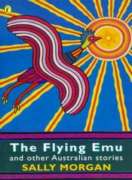
A collection of twenty traditional tales from the Australian Aborigines, explaining how the world began and what followed.

A collection of twenty traditional tales from the Australian Aborigines, explaining how the world began and what followed.
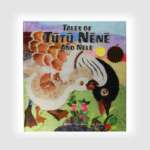
“Tutu Nene: The Hawaiian Mother Goose Rhymes” features classic nursery tales with a local twist. Little Miss Muffet who sat on a tuffet becomes Little Miss Aku who sat on a pohaku (rock), Mary and her little lamb become Malia and her little mo’o (gecko), the itsy bitsy spider becomes the itsy bitsy bufo (frog) and much more.
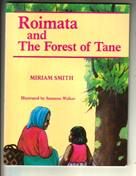
In this story a little girl, Roimata comes and stays with her grandmother. The grandmother tells her the story of a old tawa tree which was in front of their house. And how a storm comes and blows the tree down.
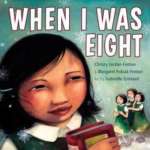
Olemaun is eight and knows a lot of things. But she does not know how to read. Ignoring her father’s warnings, she travels far from her Arctic home to the outsiders’ school to learn. The nuns at the school call her Margaret. They cut off her long hair and force her to do menial chores, but she remains undaunted. Her tenacity draws the attention of a black-cloaked nun who tries to break her spirit at every turn. But the young girl is more determined than ever to learn how to read.

How a young boy is raised by his grandfather on the Tohono O’odham Indian Reservation. The book denotes various aspects of O’odham himdag (culture) and begins with a simple question that the boy asks his Hu’ul Ke:li (Grandfather) with a culturally relevant answer as to why they do the things they do during the day. Various activities include waking up early in the morning and asking why they do so – to daily chores and activities such as tending horses, working in the garden, hauling water, and gathering food/medicine in the desert.
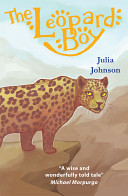
Khalid, who herds goats for his powerful uncle, meets an old man while searching for a lost goat who tells him about leopards and the fact that they are endangered. When Khalid reports the lost goat to his uncle, his uncle is sure a leopard is responsible and organizes a hunt, causing Khalid and the old man join to forces to protect the leopard. This story, set in Oman, highlights theplight of the Arabian leopard and the dilemmas facing traditional peoples in seeking to improve their lives.
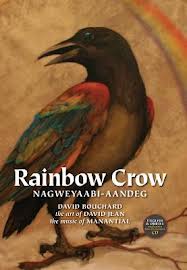
Before two-leggeds walked on Mother Earth there was a great cold. The animals formed a council; someone had to seek help from the Creator. Rainbow Crow, a most colorful bird, was selected because he had a beautiful voice that would surely impress the Creator. He flew into the heavens and won fire from above. But on the way back the fire began to burn his plumage black and destroy his beautiful voice. But Rainbow Crow persevered, bringing the life-saving fire safely back to his friends.
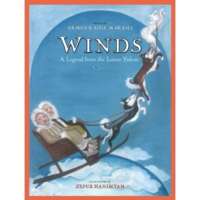
Long ago, when the Earth was young, there were no winds at all. In that time lived a couple who, more than anything else, longed for a child. A moon spirit driving a mysterious flying dogsled took pity upon the grieving wife. He showed the woman a strange tree and told her to make a doll from the trunk of the tree. The husband and wife followed the spirit’s commands – and were rewarded when the doll turned into a bright/eyed, smiling little boy. But to their amazement, their doll/child was not content to stay at home. Instead, he traveled off on a great adventure that brought good fortune to everyone in the world. A lovely story based on a legend from the Lower Yukon section of Alaska, originally collected by Edward William Nelson and published in a 500 page report titled “Eskimo About the Bering Strait”.
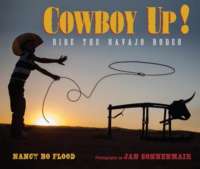
It’s morning at the rodeo. Riders are standing by. Horses are in the chutes. “Cowboy up!” the announcer calls. Then the excitement begins In this riveting collection, narrative poems give voice to the individual competitors, lively prose explains rodeo events, and evocative photographs show off the riders and ropers, the horses, bulls, and broncs. It all adds up to an unforgettable close-up view of Navajo rodeo over the course of one action-packed day.
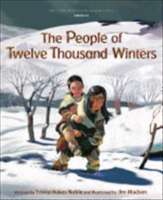
Ten-year-old Walking Turtle is of the Lenni-Lenape tribe. He lives with his family in a small village alongside the Passaic River in what will become northeastern New Jersey. They have a relatively peaceful life, with nature offering up a bounty of resources for food and shelter, amply meeting their needs.
Walking Turtle is close to his younger cousin, Little Talk, who has difficulty walking. He feels protective of him. Together they roam the forests near their village, with Walking Turtle carrying his cousin on his back.
But in the autumn of Walking Turtle’s tenth year, his father tells him that soon he must leave childhood friends behind and begin warrior school. Walking Turtle worries about what will become of Little Talk when he leaves for his training.